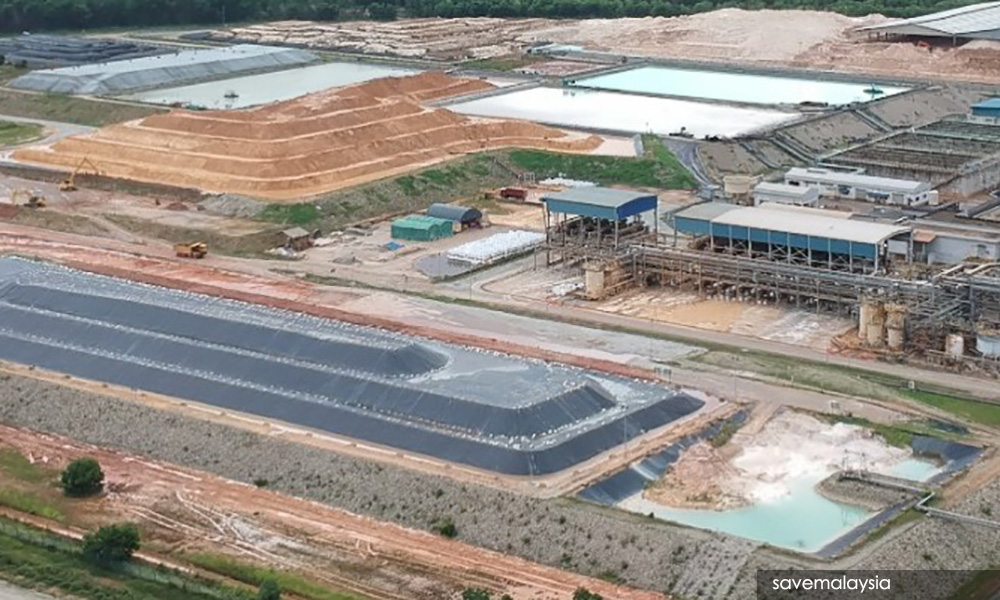
With the ongoing discussion regarding the Lynas Corporation plant, there needs to be a clarification of the levels of radioactivity that are being discussed and what they mean.
The Lynas plant has met all conditions for safe operation over the past six years. It has been subject to a parliamentary review committee, two reports by the International Atomic Energy Agency (IAEA), and the most recent December 2018 review committee report. Various court actions by opponents in the past have all failed.
Despite this technical and regulatory-based history of safe and compliant operation, there was an almost simultaneous press release by Energy, Science, Technology, Environment and Climate Change Minister Yeo Bee Yin in December 2018 of her intention to force Lynas to send the water leach purification residue (WLP) back to Australia, contrary to the review committee report.
This furore is all based on some peoples’ perception of very low levels of radioactivity still being 'radioactive', and they think dangerously so.
This radioactivity level needs to be put in to proper perspective. The levels of radioactivity in the concentrate coming from Australia and the WLP produced at the Lynas Advanced Materials Plant (Lamp) are similar at about 6 Bq/g of thorium-232. A Bq, or Becquerel, is one atom decaying per second. That is a very small unit, being at the individual atom scale.
This level of activity is described by the IAEA as very low and intrinsically low risk. It does not require placarding as radioactive for transport or processing internationally and in other countries because it is below the 10 Bq/g level above which that would be required. Malaysia historically happens to use a low 1 Bq/g limit based on an old out-dated standard.
It is worth noting here that there is radioactivity in all environments. We all receive radiation from the ground, the structures we live and work in, the food we consume, from space (cosmic radiation) and from each other (there is about 7,000-8,000 Bq in the average 70kg human body).
Additionally, there are some areas around the world where people are living on much higher levels of radiation from the earth than average, from thorium.
Studies have found that there have been no noticeable deleterious health effects over many years. Examples of such places are Ramsar in Iran, Guarapari in Brazil, Karunagappally in India, and Yangjiang in China.
These high background areas are caused by thermal springs, radioactive sands and rocks and such materials used in building products, or a combination of these.
For comparison, the concentration of radioactivity in WLP to that in the human body is about the same ratio of the radiation that everyone receives when flying at greater than 10,000m altitude compared to that at ground level.
So, whenever you see Yeo, Bentong MP Wong Tack, Kuantan MP Fuziah Salleh or anti-Lynas protestors taking commercial flights you should realise the extent of their hypocrisy in accepting definite higher levels of radiation at altitude.
That is while they are continuing their non-scientific, irrational claims of dangerous radioactivity in a material that no other jurisdiction would deem to be the case.
Readers should also look at the radioactivity in other by-products that are produced in Malaysia, or indeed, imported, such as phosphate fertilisers.
But then Lynas’ critics would say the thorium is long-lived with a half-life of 14 billion years. Let’s look more closely at the radioactivity in the human body. It is dominated by potassium-40, which is 0.0117 percent of all the potassium in the world.
Since potassium is an essential ingredient in our bodies, we contain a small mass of this radioactive nuclide. The typical body will have around 4500 Bq of Potassium-40, and, yes, potassium-40 is a long-lived nuclide with a half-life of 1.3 billion years.
The three politicians or associates may then also claim that “secular equilibrium” means that the activity in the WLP is actually higher due to the decay products from the thorium-232.
During the processing that “secular equilibrium” has been destroyed and it takes decades to re-establish for thorium-232. And the accepted international standard is based on thorium-232 taking into account the various radioactivities of any decay products.
This discussion is to highlight the relativities of these levels of radioactivity and the scaremongering by those opposing Lynas for whatever ulterior motives.
As proven and stated, the levels of radioactivity in concentrate and WLP are very low and intrinsically low risk.
Other naturally occurring radioactive materials are frequently used and utilised around the world in many applications, and are not subject to such stringent restrictions or requirements that a vocal minority of people are trying to implement (selectively) to one particular company in Malaysia. - Mkini


No comments:
Post a Comment
Note: Only a member of this blog may post a comment.